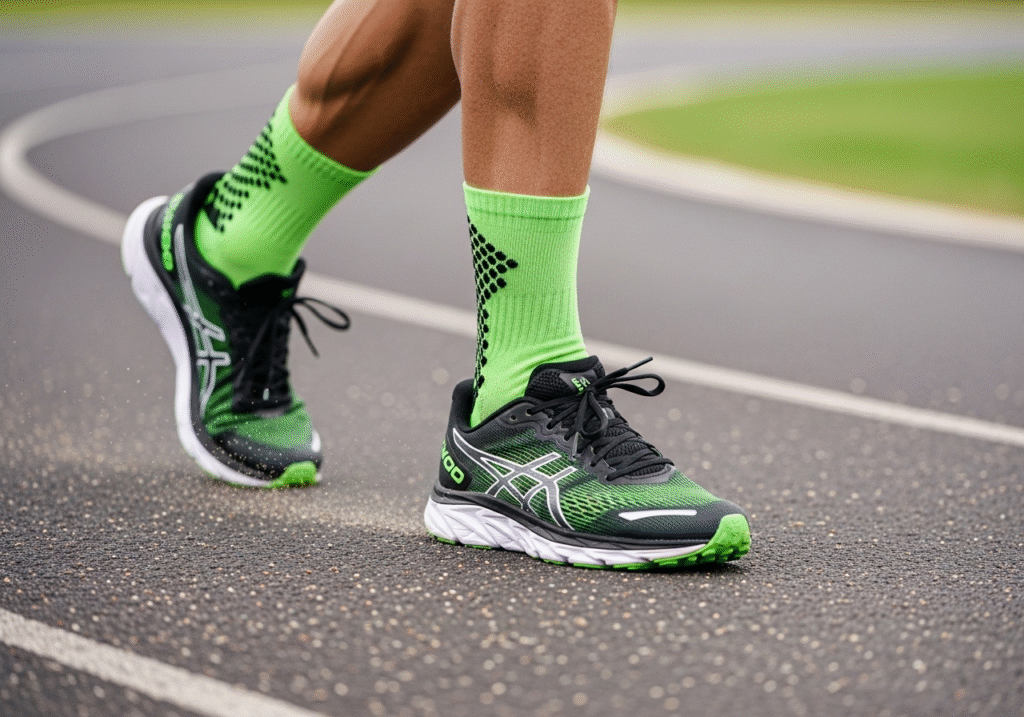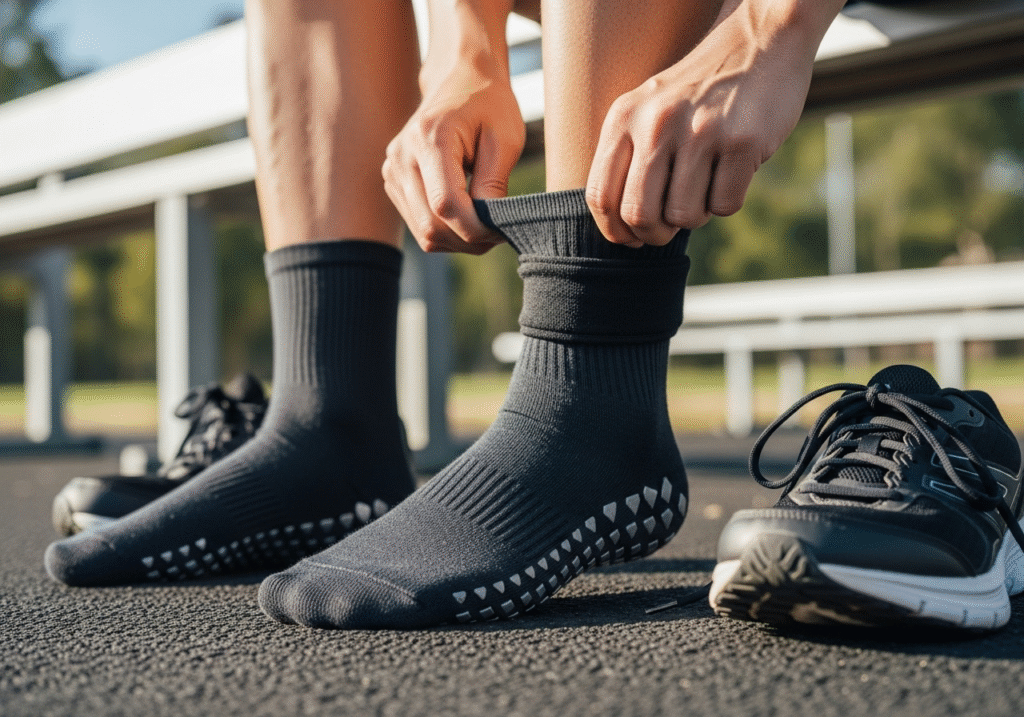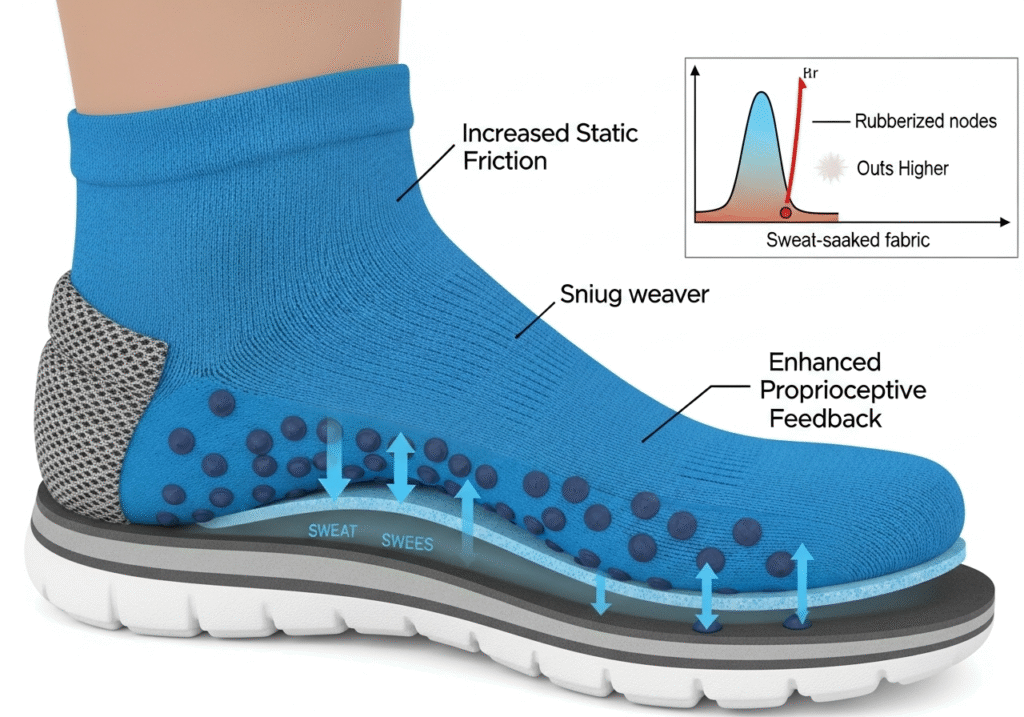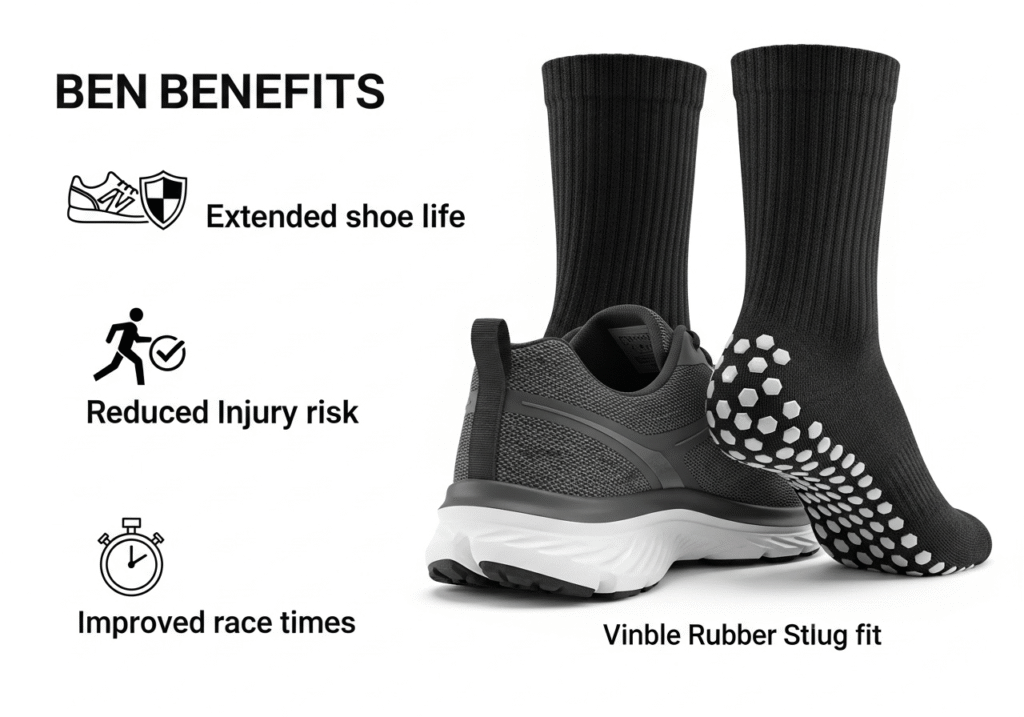Sweaty feet slide inside shoes, zap power, and cause blisters. That frustration ruins long runs and sprints alike. Grip socks fix the slip and return control to every stride.
Grip socks create steady contact between foot and shoe, cutting internal slippage, boosting push-off force, and lowering blister risk for runners in all weather.

I once lost a race because my feet felt like they floated in my shoes. After I tried grip socks, each step felt locked in. Keep reading, and I’ll share why this simple change can reshape your runs.
Do You Need Grip Socks for Running?
Blisters flare, toes jam, and shoes rub raw spots. These issues slow you down and break focus.
Yes, runners need grip socks because they stop foot slippage inside the shoe, cut friction, and keep form steady over any distance.

Core Challenges Without Grip
Running shoes often have smooth liners. When sweat builds, the foot glides. That glide makes toes slam forward on downhill parts and heels lift on climbs. Friction spots grow into blister hot-beds. Form breaks. Each wasted micro-movement steals energy.
How Grip Socks Solve It
Grip socks have silicone or rubber panels that cling to the insole. The foot stays planted. Push-off becomes direct. Downhill braking feels sure. Heel lift is gone. I noticed fewer black toenails after swapping.
Choosing the Right Pair
Pick socks with inside and outside grip lines. Check fabric breathability. Match cuff height to shoe collar to avoid skin rub.
| Problem | Regular Socks | Grip Socks |
|---|---|---|
| Inside shoe slip | High | Very low |
| Blister chance | Often | Rare |
| Power transfer | Lost energy | Direct energy |
| Foot stability | Unsteady | Locked-in |
Do Grip Socks Help You Run Faster?
You train hard yet lose seconds from small, hidden inefficiencies. That lag frustrates any competitive spirit.
Grip socks can help you run faster by preventing slide-back inside the shoe, allowing stronger push-offs and more efficient energy transfer with each stride.

Power Through Better Traction
Running is a chain of mini squats. When the foot slips, force leaks. Grip socks glue the sole to the shoe. More watts reach the ground. In my half marathon, mile splits dropped by five seconds once slippage vanished.
Reduced Fatigue
Constant micro-corrections1 burn calf and arch energy. A locked foot path lowers neuromuscular noise2. The body saves that effort for speed.
Confidence in Every Turn
On wet tracks, sharp bends scare me. With grip socks, I trust my shoes. I lean in harder and exit turns faster.
| Speed Factor | Impact With Regular Socks | Impact With Grip Socks |
|---|---|---|
| Force leakage | Noticeable | Tiny |
| Turn confidence | Moderate | High |
| End-race form | Breaks down | Holds steady |
What Is the Science Behind Grip Socks?
It looks like a fashion tweak, yet hidden mechanics drive the benefit.
The science of grip socks rests on friction coefficients and proprioceptive feedback: rubberized nodes raise static friction above sweat-soaked fabric, while snug weave heightens foot-in-shoe awareness.

Friction Coefficient Boost
Silicone and rubber grips lift static friction from around 0.3 (cotton on insole) to over 0.6. That jump means the foot needs double the lateral force to move. So slippage stops even when shoes and feet sweat.
Sensory Feedback
Grip zones are slightly raised, pressing on plantar nerves. This extra input tells the brain where the foot sits, improving stride timing. Studies on cutaneous stimulation show faster muscle activation when tactile feedback rises.
Moisture Management
Many grip socks use yarns like Coolmax or Merino that wick moisture. Dry surfaces already grip better. Combined with rubber nodes, the sock keeps both moisture and movement under control.
| Scientific Element | How It Works | Running Advantage |
|---|---|---|
| Static friction | Rubber nodes increase grip | Less slide, more power |
| Proprioception | Raised points stimulate nerves | Faster muscle response |
| Moisture wicking | Technical fibers dry quicker | Cooler, blister-free run |
Are Grip Socks Actually Worth It?
Extra gear costs money and adds laundry. Skepticism is fair.
Grip socks are worth the cost because they extend shoe life, reduce injury risk, and improve race times, offering clear returns on a small investment.

Cost vs Benefit
A quality pair costs less than a coffee run per month if you spread the price over its lifespan. In return, you save on blister pads, tape, and maybe medical bills.
Shoe Longevity
Less internal rub means inner liners wear slower. My daily trainers kept their heel cup intact an extra 200 miles once I switched.
Injury Reduction
Blisters force gait shifts that strain knees and hips. By staying blister-free, you keep a natural stride and lower overuse injuries.
| Value Point | Without Grip Socks | With Grip Socks |
|---|---|---|
| Blister spending | High | Low |
| Shoe replacement | Sooner | Later |
| Training downtime | More | Less |
| Race performance | Variable | Consistent |
Conclusion
Grip socks keep the foot locked, boost power, cut blisters, and pay for themselves in comfort and performance. One small change, many faster, safer miles.
Related
